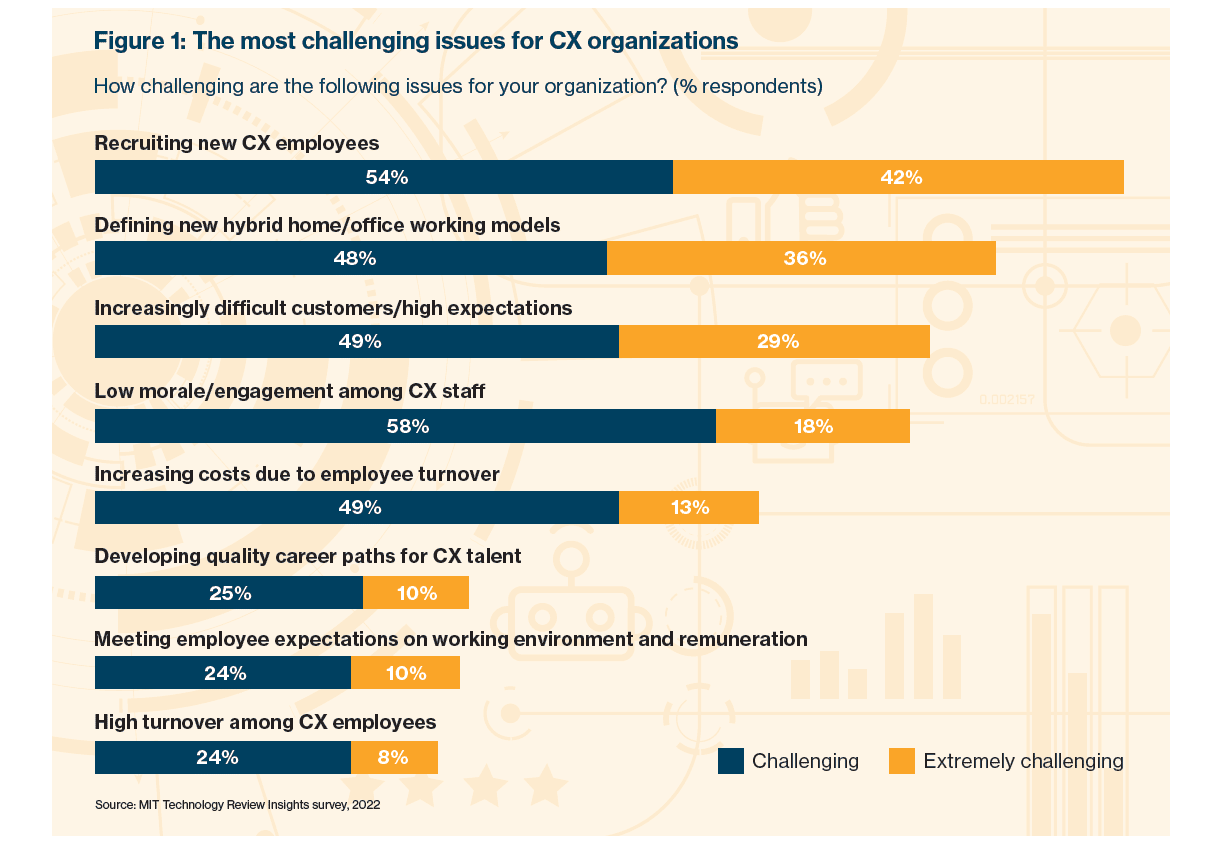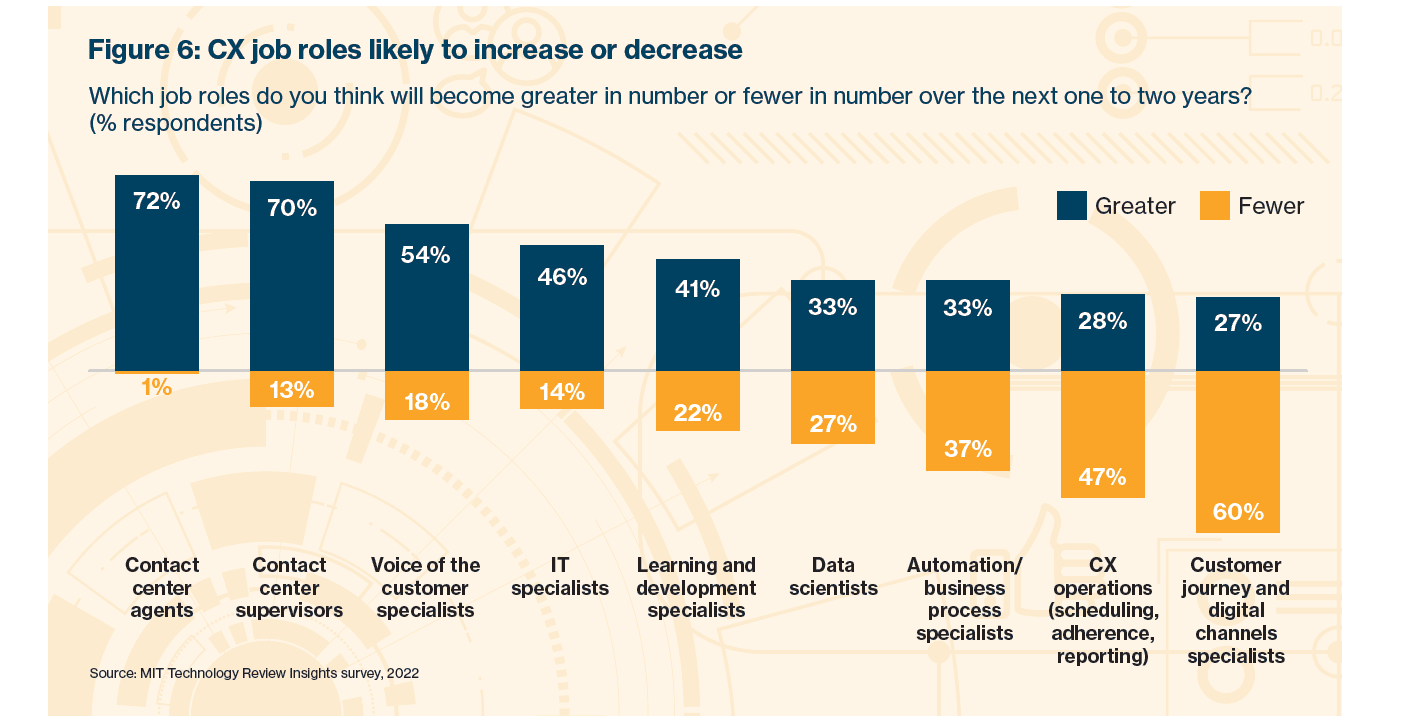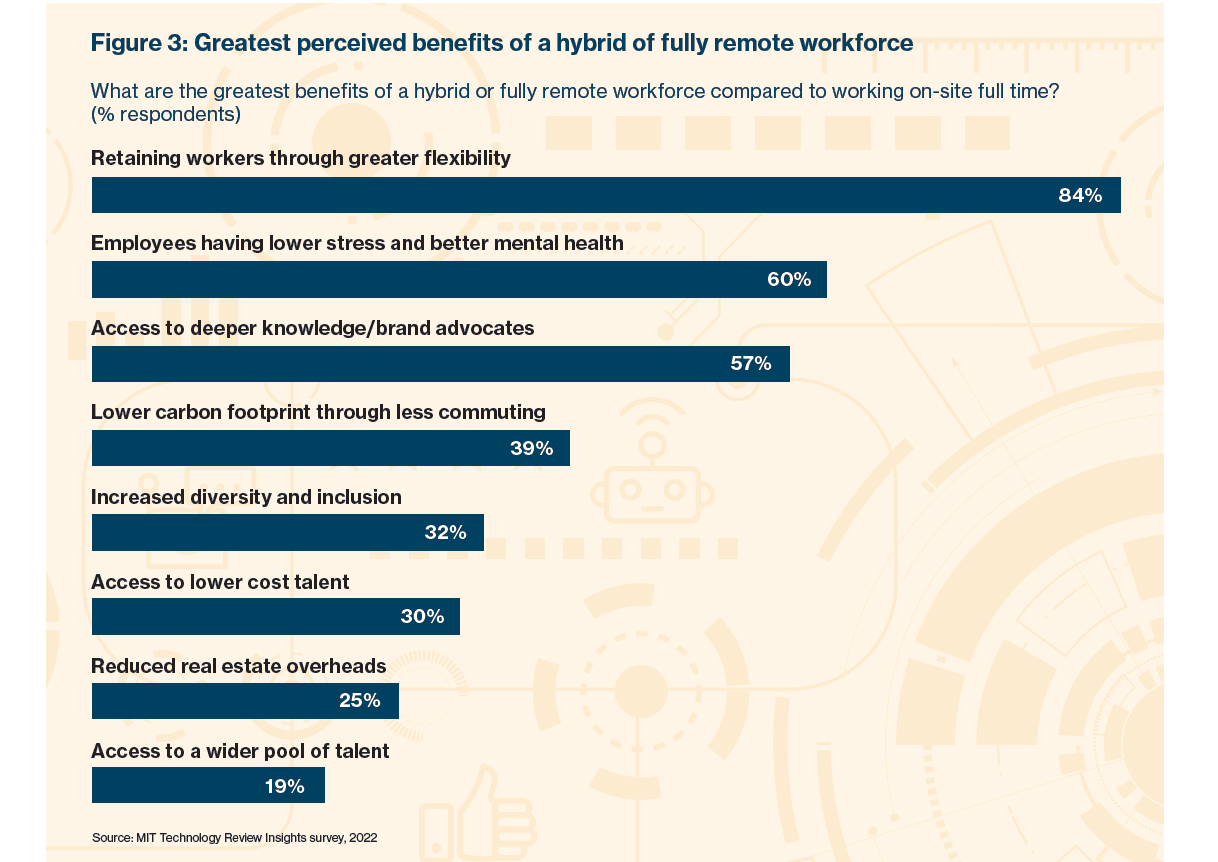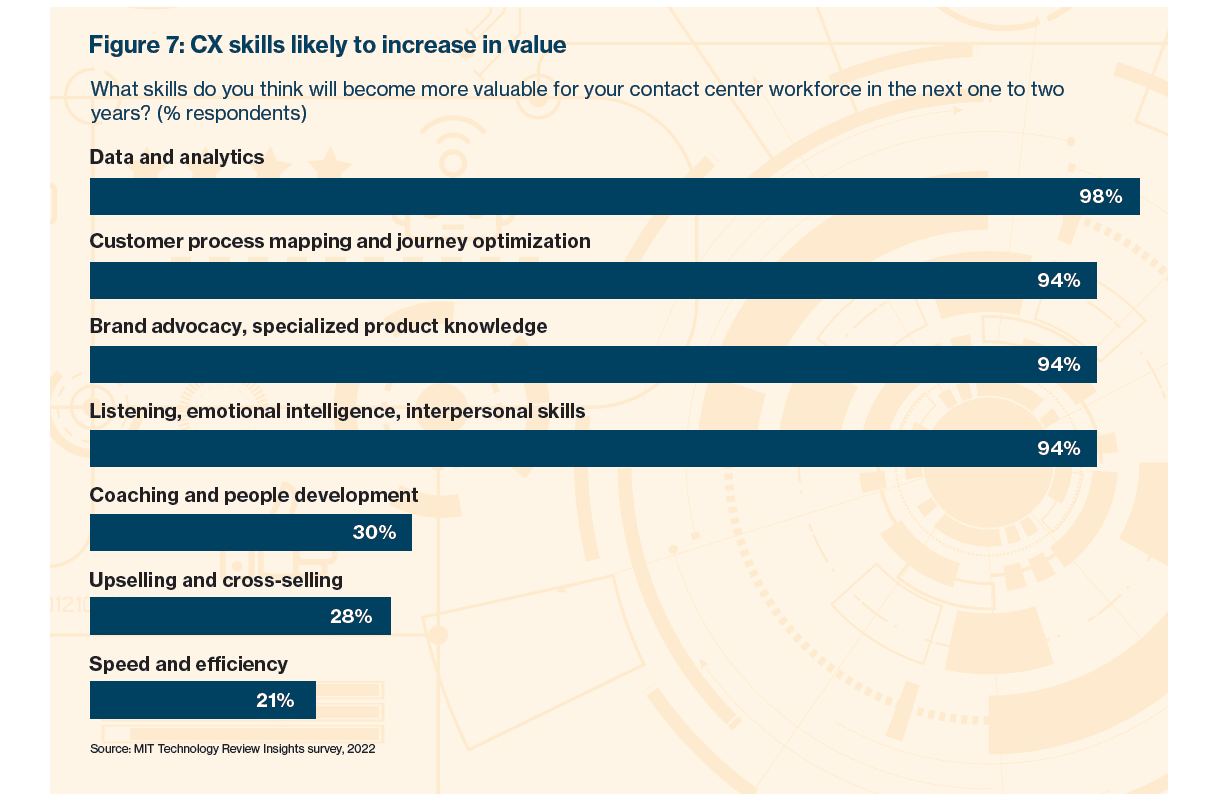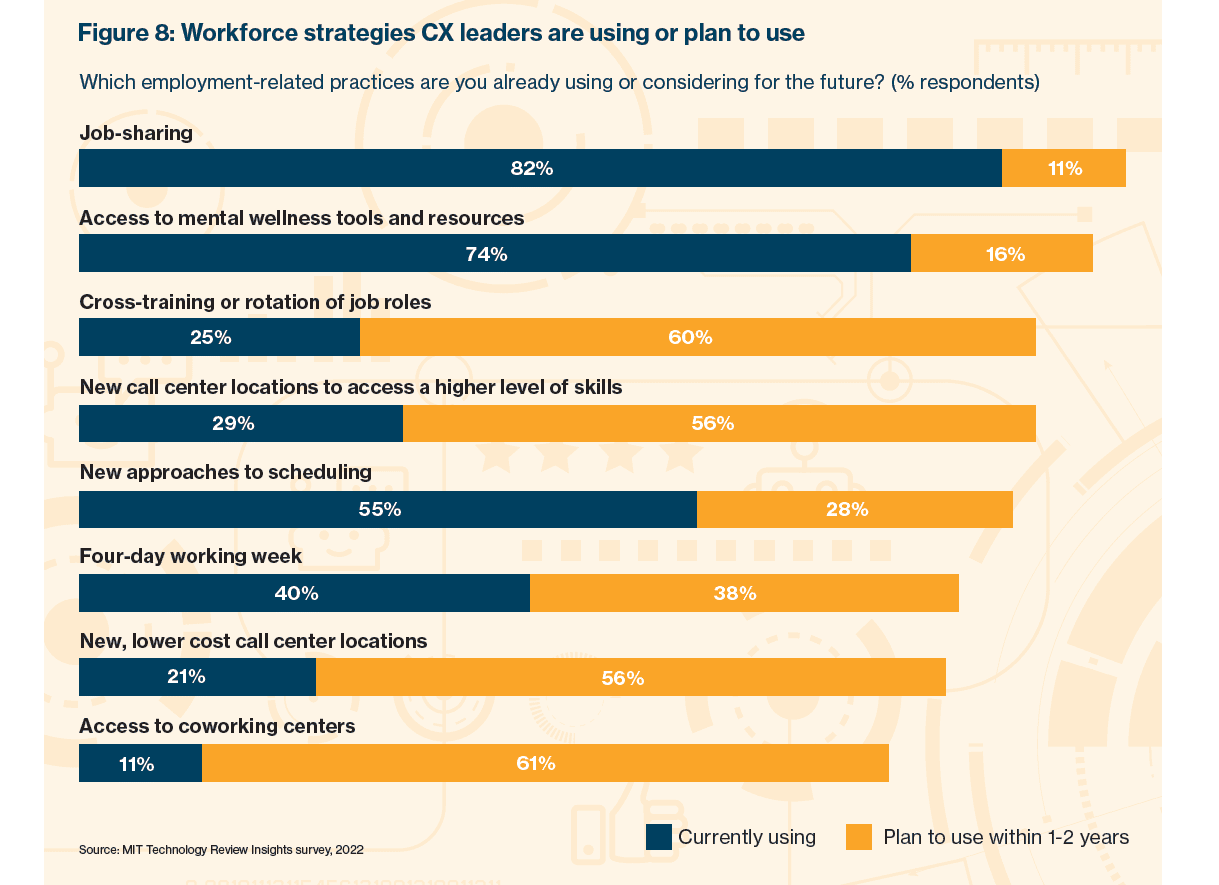Newly released research from MIT Technology Review Insights, the custom publishing division of MIT Technology Review, explores how global organizations are reassessing their customer experience (CX) workforce and processes in the post-pandemic era.
The firm’s new report, Customer Experience and the Future of Work, in partnership with CX software firm Genesys, is based on a survey of 800 senior executives as well as in-depth interviews with business executives and experts at organizations including IBM, AT&T, Zurich Insurance, Marriott International, and Probe CX.
The findings are as follows:
There is a “people paradox” in relation to customer experience staff
Almost nine out of 10 survey respondents recognize CX as a strategic differentiator of their brand. However, the research also finds contradictory views about the employees who interact with customers on a daily basis: employers are more concerned with the challenge of finding new employees than retaining those they already have.
Covid-19 has catalyzed a long-term shift toward flexible working for contact center employees
According to the survey, the remote and hybrid working models rapidly deployed during the pandemic are here to stay. More than one-third of contact center employees will be permitted to work remotely by 2024, and a further 23 percent will be in a hybrid arrangement.
Remote working has numerous benefits but productivity and culture concerns remain
More than eight out of 10 survey respondents say hybrid or remote work options allow them to better retain staff by offering flexible schedules. Some 60 percent of them say it lowers staff stress levels and improves their mental health, and more than half find it offers access to brand advocates or those with deeper knowledge. However, many CX leaders also have concerns about lower productivity, inconsistent customer service, and a negative impact on culture and collaboration.
CX work will require a more specialized and technical skill set as well as shifts in workforce strategy
More than two-thirds of survey respondents expect CX work to become more specialized in the coming two years. The skills they will require include data and analytics, customer journey optimization, specialized product knowledge and emotional intelligence. To develop these high-value skills, organizations predict expanding the number of full-time CX employees, hire more learning and development specialists, and explore “gig work” models.
Learning and development is a strategic focus area for improving the CX employee value proposition
More than two-thirds of survey respondents identify learning and development as an area of the CX employee lifecycle in most need of improvement, and nearly half consider insufficient learning and development opportunities to be one of their employees’ greatest daily frustrations.
“A successful CX organization will ensure that vital ‘voice-of-the-customer’ insights are permeated across different departments to improve their processes, and employees understand how the organization works and what career paths are available to them,” said Laurel Ruma, global director of custom content of MIT Technology Review Insights, in a news release. “Yet the ‘people paradox’ still exists. CX leaders are more concerned about the challenge of bringing in new people than they are about the volume of people leaving. This approach to employees has to change. Organizations that don’t start thinking differently will continue to lose people and the customer experience will suffer.”
“It’s time to rethink how we approach the employee experience with intentionality and empathy,” said Merijn te Booij, executive vice president and general manager, workforce engagement management at Genesys, in the release. “Instead of accepting high attrition as an inevitability, organizations need to invest in developing and retaining highly trained and engaged staff who deliver the best customer experience. Providing your CX workforce with the right path for their long-term success is a win-win scenario that leads to happier employees, better customer loyalty, and ultimately better business results.”


